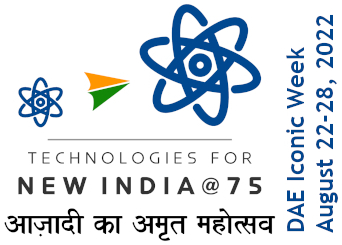Past Colloquia
| Title : |
The GRIT/MUGAST project for direct reactions studies |
|
| Speaker | : | Prof. Didier Beaumel, IPN, Orsay |
| Date | : | February 06, 2019 |
| Time | : | 11:30 AM |
| Venue | : | Lecture Hall-1 |
| Abstract | : |
Direct reactions such as transfer reactions represent a core component of the Physics program to be implemented at the existing and forthcoming ISOL-type facilities in Europe and beyond. A large fraction of our present knowledge of nuclear structure come from their early study in the 60-70’s with stable beams. With the availability of Radioactive Ion Beams (RIB), central themes of nowadays Nuclear Physics such as: shell structure and shapes far from the stability, neutron-proton pairing, and nucleosynthesis involving radioactive nuclides can be investigated by means of these reactions studied in inverse kinematics. Experimentally, the latter method in which an RIB impinges on a light particle target requires the detection of the recoiling light particles with high accuracy. For that purpose, high granularity Silicon-type arrays such as MUST and MUST2 based on a concept of three-stage telescopes have been developed to achieve sufficient angular and energy resolution while insuring large solid- angle coverage. Driven by the requirement of improved excitation energy resolution, systems combining Si-arrays with gamma detectors have been further proposed. Such combination allows a large gain in excitation energy resolution, (typically a factor 100 with Ge detectors), crucial when investigating medium-mass nuclei e.g. fission fragments. Spectroscopic information on the populated states can be also obtained from their gamma decay. The GRIT project is based on the above mentioned concept of particle-gamma detection. It consists in a new type of compact, high granularity Silicon array, with new electronics allowing seamless integration inside the Advanced Gamma Tracking array AGATA, as well as the next-generation gamma detector PARIS. This new array is also meant to offer state-of-the art particle identification, pulse-shape discrimination using high sampling rate digital electronics, for improved reaction channel separation hence physical background reduction. Native integration of special targets such as the pure and windowless hydrogen target production system CHYMENE, is also aimed for. The project includes an important milestone which consists in the completion and implementation of an intermediate configuration called MUGAST, making use of the newly detectors developed for GRIT and of the existing MUST2 electronics. This setup will allow perform the first high-resolution direct reaction experiments with AGATA in its 1π configuration presently installed at the VAMOS beam LINE of GANIL. MUGAST is now completed and being mounted in view of the Spring 2019 campaign of GANIL during which there MUGAST-AGATA experiments are scheduled. I will present the MUGAST device and its extension to the GRIT array as well as an overview of the associated Physics programs. |




